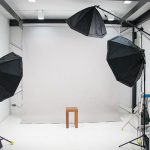Test and measurement equipment plays a crucial role in electronics, whether you’re troubleshooting circuits, verifying designs, or learning how different components behave. If you’re just starting, understanding what tools you need and how they work is vital. Among these tools, the oscilloscope stands out as one of the most commonly used and powerful instruments. This guide introduces the fundamental test and measurement equipment used in electronics and offers a practical approach to choosing and using these devices.
The Importance of Test and Measurement Equipment
In electronics, theory only takes you so far. To work effectively, you must be able to measure voltages, currents, resistance, and signal behaviour. Through this, test and measurement equipment becomes necessary for work. These tools help verify if a circuit functions as intended or detect where faults occur. Professionals use these across various industries, including automotive, telecommunications, medical devices, and consumer electronics.
Accuracy matters for hobbyists and professionals. Faulty measurements can lead to incorrect conclusions and costly design errors. You save time and reduce guesswork by investing in quality tools and learning to use them properly. Whether designing a new product or fixing a broken one, having the right equipment ensures safe, reliable results.
Oscilloscope: A Must-Have Diagnostic Tool
An oscilloscope allows you to visualise electrical signals in real-time. Unlike a basic multimeter that provides numerical values, the oscilloscope gives you a waveform that shows how voltage varies over time. This is particularly useful for analysing digital signals, observing noise, and identifying timing issues in microcontroller-based circuits.
For beginners, a two-channel digital oscilloscope is usually sufficient. It allows you to compare signals between two points in a circuit. Understanding how to set voltage scales, time bases, and triggers is essential for accurate readings. With some practice, you can quickly identify problems like voltage spikes, signal distortion, or unexpected oscillations. The oscilloscope is more than just a display tool—it’s an essential part of every electronics bench.
Other Essential Test Instruments for Beginners
Besides the oscilloscope, several other instruments form the backbone of basic electronics testing. A digital multimeter is often the first tool anyone buys. It measures voltage, current, and resistance and is useful for quick checks and general diagnostics. It’s crucial for tasks such as circuit continuity and component testing.
A function generator is also useful if you need to inject specific signals into your circuit, such as sine waves or square waves. This helps test circuit responses under controlled conditions. Additionally, power supplies with adjustable voltage and current settings are crucial when working on prototypes or sensitive components. Finally, consider using logic analysers if your work involves digital circuits, microcontrollers, or communication protocols such as I2C and SPI. Each tool serves a different purpose, but together, they allow a complete evaluation of circuit performance.
Tips for Setting Up Your First Electronics Bench
Setting up your test bench doesn’t need to be expensive or complicated. Start with the basics: a reliable multimeter, an entry-level oscilloscope, and a regulated power supply. Remember to keep your workspace organised. Use proper grounding and anti-static measures to protect your components.
Invest in more advanced instruments as you enhance your skills. Focus on usability and precision rather than simply chasing the highest specifications. Choose tools that offer good customer support, tutorials, and software compatibility. Over time, high-quality test and measurement equipment improves your work and helps you understand electronics more.
Conclusion
Understanding and using test and measurement equipment is key to becoming proficient with electronics. From the essential multimeter to the versatile oscilloscope, each instrument provides insights that are impossible to gain through theory alone. As a beginner, start simple and gradually build your setup as your confidence and needs grow. With the right tools and knowledge, you’ll be better equipped to troubleshoot, design, and explore the world of electronics with precision and confidence.
Ready to upgrade your electronics toolkit? Visit Genetron Singapore to discover high-quality test and measurement equipment and take your projects to the next level.












